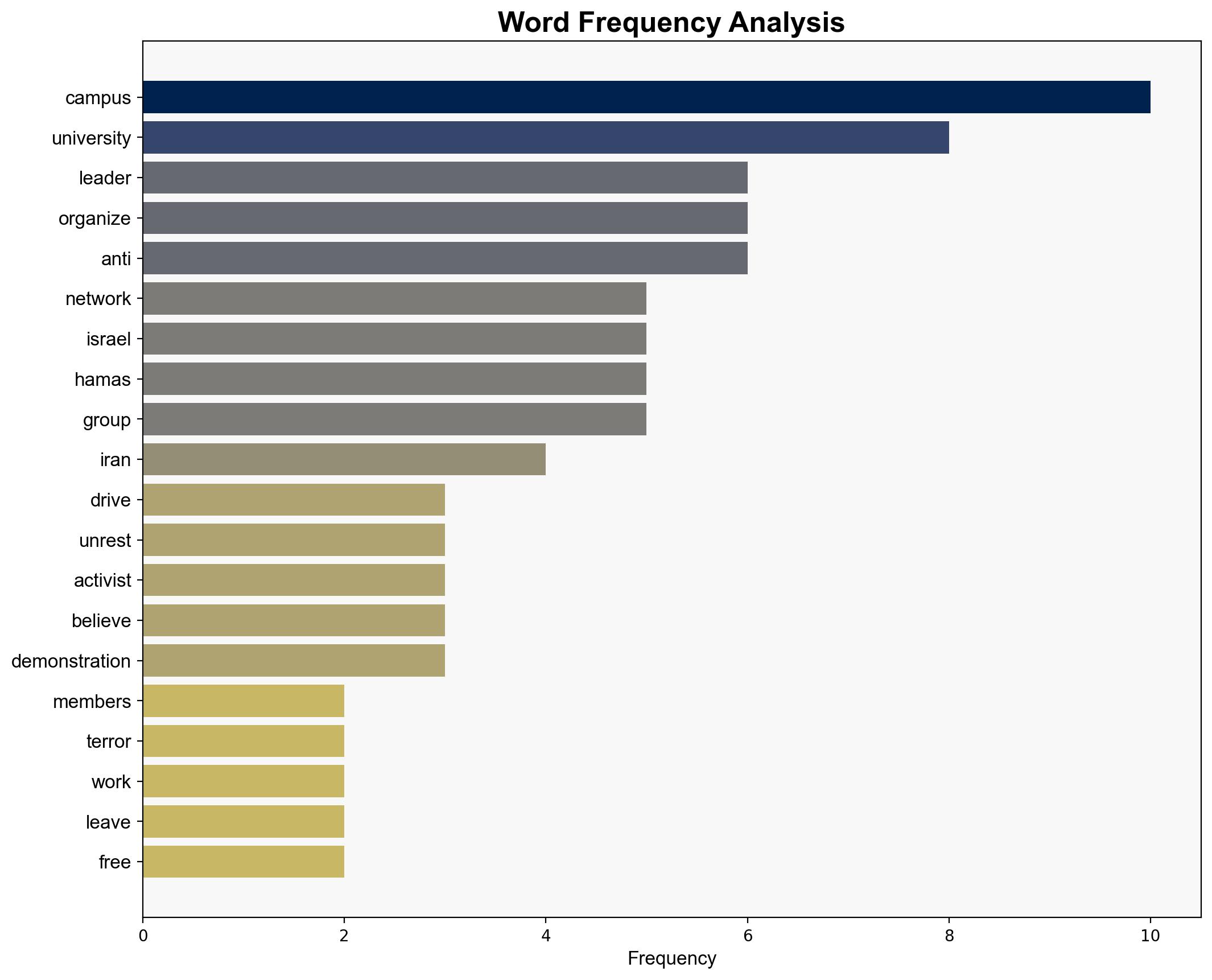Several University Leaders Say Organized Networks Drove Anti-Israel Unrest on Campus – Legalinsurrection.com
Published on: 2025-10-30
Intelligence Report: Several University Leaders Say Organized Networks Drove Anti-Israel Unrest on Campus – Legalinsurrection.com
1. BLUF (Bottom Line Up Front)
The most supported hypothesis is that organized networks, potentially involving foreign entities, are influencing anti-Israel unrest on U.S. campuses. Confidence in this assessment is moderate due to the lack of direct evidence linking specific foreign governments to these activities. Recommended action includes increased monitoring of campus activities and investigation into potential foreign influence operations.
2. Competing Hypotheses
1. **Hypothesis A**: Organized networks, potentially including foreign governments like Iran, are actively driving anti-Israel unrest on U.S. campuses. This hypothesis suggests coordination and strategic intent behind the protests, possibly involving financial and logistical support.
2. **Hypothesis B**: The unrest is primarily organic, driven by domestic social movements and student activism, with minimal or no foreign influence. This hypothesis posits that the protests are a result of social contagion and local grievances rather than orchestrated external efforts.
Using the Analysis of Competing Hypotheses (ACH) 2.0, Hypothesis A is better supported by the statements from university leaders and the mention of potential foreign involvement. However, the absence of concrete evidence weakens its conclusiveness.
3. Key Assumptions and Red Flags
– **Assumptions**: Hypothesis A assumes a level of coordination and capability by foreign entities that may not be substantiated by available evidence. Hypothesis B assumes that domestic factors alone can account for the scale and intensity of the unrest.
– **Red Flags**: The reliance on anecdotal evidence and statements without corroborating data. The potential for cognitive bias, such as confirmation bias, where evidence is interpreted to fit pre-existing beliefs about foreign influence.
– **Blind Spots**: Lack of direct evidence linking specific foreign entities to the protests. Potential underestimation of the role of domestic factors in driving unrest.
4. Implications and Strategic Risks
– **Patterns**: If Hypothesis A is accurate, it indicates a strategic pattern of foreign interference in domestic affairs, which could escalate tensions and lead to broader geopolitical conflicts.
– **Cascading Threats**: Increased polarization and potential for violence on campuses. Potential for cyber operations targeting universities as part of broader influence campaigns.
– **Potential Escalation**: If foreign involvement is confirmed, it may lead to diplomatic tensions and retaliatory measures, impacting international relations and domestic security policies.
5. Recommendations and Outlook
- Enhance intelligence gathering and analysis on campus activities and potential foreign influence operations.
- Engage with university leaders to develop strategies for identifying and mitigating external influence on campus protests.
- Scenario-Based Projections:
- **Best Case**: Increased awareness and preventive measures lead to a decline in foreign-influenced unrest.
- **Worst Case**: Confirmation of foreign involvement leads to heightened campus tensions and international diplomatic crises.
- **Most Likely**: Continued debate and investigation into the extent of foreign influence, with incremental policy adjustments.
6. Key Individuals and Entities
– Kent Syverud
– Daniel Diermei
– Avril Haines
7. Thematic Tags
national security threats, cybersecurity, counter-terrorism, regional focus




